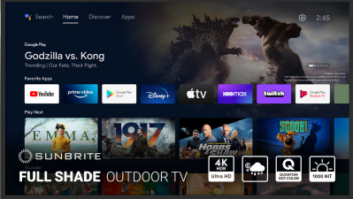
Editor’s Note: This column was written specifically for CES 2019 Eureka Park exhibitors.
Having spent an abundance of time working with hardware startups looking to get a product to market, I’ve discovered that every journey is different, and there are a few tips that might help you find success.
Tip #1: No Shortcuts
The first truth is that there are no shortcuts in hardware. I’m always amazed at how many startup founders are willing to concoct (and justify) elaborate fantasies about how they can circumvent some of the work required to get a product into production. A common shortcut is that hardware startups often see crowdfunding on a platform like Kickstarter as a panacea for doing the hard work of raising money and completing early-stage product development. Nothing could be further from the truth. Crowdfunding requires setting a reward price for a product. But how can startups know how to price a product if they don’t know how much it costs to make?
Hardware entrepreneurs and startups learn so much about their product as they progress from idea to prototype, and there is no substitute for the knowledge gained along the iterative journey of turning an idea into a desirable solution. Crowdfunding might be a good way to introduce a product to the world, but startups still need to perform the necessary steps to develop, and produce, a successful product at scale.
Stay up to date with all things CES-related with one-click access to our CES Hub.
A great resource for startups who may not be sure how to get started is Path to Prototype from Avnet. It’s a free resource that’s designed like a board game to keep users engaged and motivated as they bring their ideas to life.
Tip #2: Humility
Another important tip is that many new founders don’t know as much as they think they do. This is reflected in a lot of early designs I see. Many startups have hardware designs heavily focused on the technology they’re most comfortable with. While it makes sense to work with what you know, in the world of electronic components, for example, there could be hundreds of options available, most of which first-time founders probably aren’t familiar with.
For that reason, I strongly recommend having a professional design review before investing too much time and money into prototyping a product. As Scott Miller, founder of Dragon Innovation, likes to say: “Early decisions cast long shadows.”
The best time to discover a problem with a product design isn’t when the first 5,000 units are rolling off of a manufacturing line. Having someone do a professional design review of a prototype early on can lower costs, improve performance, and uncover potential issues that the design team may have missed. It’s well worth it to reign in one’s ego, seek expert help, and verify that everything in a product is optimized.
Tip #3: Reality-based Budgeting
A third tip in hardware is that everything will inevitably cost more than actually budgeted, and will take longer than expected. Don’t be discouraged by escalating costs and pushed timelines, but rather account for them early.
When you compare your existing budget to a weather forecast, have you planned for a sunny day, a little rain, or a thunderstorm? In the world of hardware development, you’ll quickly find that you shouldn’t ever leave the house without an umbrella!
The trick is not to simply add a 15 percent buffer to all of the costs, but to understand what can go wrong and why. Have you accounted for attrition in your printed circuit boards? What about scrap in general? Have you properly accounted the costs of simply running a business (legal, financial, overhead)? Hardware startups are notorious for burning through investment capital before they ever get a product to market. Understanding costs, and how they could increase, is one of the most important factors in successfully launching a hardware product.
The road to market in hardware, from idea to prototype to production, is often more of a maze than a straight line. However, by not looking for shortcuts, accepting that you don’t know everything, and budgeting for financial pitfalls, you can do it!
If you’re not sure where to get started, collaborating with an experienced partner is a great first step!
Bob Merriman is director of strategic planning at Avnet.










